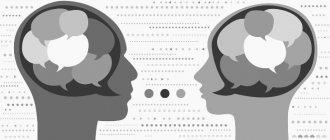Such a pathology as organic emotionally labile asthenic disorder is little known to the public, but occurs quite often. It is caused by damage to the tissues of the central nervous system in the brain as a result of injury, infection, or intoxication. In ICD-10, this disease has code F06.6 and is characterized by changes in emotions and mood in a wide range (lability), unpleasant physical sensations and pain, and fatigue resulting from an organic disorder.
Reasons for the development of the disease
Psychoorganic syndrome, which affects children and adults, can result from:
- problematic pregnancy and childbirth, accompanied by toxicosis, eclampsia, threat of miscarriage;
- severe condition of the newborn requiring the use of mechanical ventilation;
- infections and serious illnesses in early childhood;
- epilepsy;
- HIV;
- head injuries
- tumors, vascular diseases of the brain - hypertension (stroke), atherosclerosis;
- encephalitis, neurosyphilis, etc.;
- consequences of anesthesia;
- intoxication with alcohol and drugs.
There is also a hereditary predisposition.
Organic emotional labile asthenic disorder is classified as hysterical. It is also considered borderline, since it occupies an intermediate position between schizophrenia and disorders such as affective, personality, and neurotic.
1.General information
Asthenia is one of those medical concepts whose capacity and scope do not allow them to be defined unambiguously, accurately and completely. Doctors of various profiles use this term rather intuitively, and just as intuitively, often too roughly, it is understood by patients. Within the framework of I.P. Pavlov’s physiological approach, one would have to talk about an imbalance between the processes of excitation and inhibition in various zones of the cerebral cortex; specialists of psychodynamic or psychosomatic directions would refer to debilitating intrapsychic stress and lack of mental energy; pathopsychologists more often deal with asthenic personality types, etc.
Asthenia, asthenic syndrome, chronic fatigue syndrome, asthenic development (or disorder, or reaction) of personality, neurasthenic neurosis are by no means equivalent concepts, although they are often incorrectly used as synonyms.
At present, the term “neurasthenia,” or neuropsychic weakness, should probably be considered the most general, universal, clinically and theoretically substantiated concept. This condition, firstly, is always pathological (in contrast to “ordinary” fatigue, which can be caused by accumulated fatigue and is relieved by basic rest), and secondly, it is always based on specific etiopathogenetic mechanisms (even if the causes cannot be established immediately or fails at all) and, finally, develops due to the existence of complex relationships between the central nervous system, the neurohumoral regulation system, somatic structures and physiological processes in the body. With this approach, the wide prevalence of asthenic conditions and their syndromological presence in the clinical picture of a wide variety of diseases, from purely mental to chromosomal, becomes understandable.
However, the direct literal translation sounds quite clear: asthenia (ancient Greek ἀσθένεια) means exhaustion, impotence, lack of strength.
A must read! Help with treatment and hospitalization!
Symptoms and consequences
People suffering from this organic disorder are quick-tempered, angry, and even for minor reasons they experience violent outbursts of emotions. Their loved ones irritate them, and troubles are perceived literally like this: “everything is lost.” The mood changes abruptly and dramatically, like the weather in spring. Negative reactions arise spontaneously and cannot be adjusted.
Patients are touchy, prone to sentimentality, and tearful. Asthenia is manifested by weakness, rapid fatigue - even 2-3 hours of work is enough for them to get tired. Then complete powerlessness sets in, requiring serious rest.
Such people experience frequent headaches, even dizziness. Typically, such sensations occur when weather conditions change. They cannot tolerate a lack of oxygen and stuffiness, so it is difficult for them to travel on public transport. Sunlight hurts the eyes, normal sounds are perceived as very loud, even a slight touch causes pain.
Children with psychoorganic syndrome may talk in their sleep or walk.
As the disease progresses, problems with emotions, thinking and memory become more severe. The patient, talking about something, is distracted from the main thread of the story, going into insignificant, insignificant details. His thoughts become viscous, he often repeats the same phrases, his vocabulary becomes impoverished, and rhymes slip through his everyday speech.
The individual completes the assigned task slowly, since his mental processes proceed inertly. He remembers recent events poorly, not to mention those that happened long ago.
Critical abilities are impaired, and, although the patient understands the line between good and bad, he may speak tactlessly or commit an unacceptable action.
Character deteriorates, and what a person previously tried not to demonstrate, considering it a bad trait, comes out. He becomes boastful, sticks out his merits, exaggerating and pathetically praising them. Such euphoria abruptly turns into gloom, melancholy and suddenly - an affective outburst over a small matter. At this moment, the patient loses self-control, his consciousness narrows and focuses on the immediate task - to immediately punish the one who offended him, even if nothing of the kind actually happened. And then a tragedy may occur: he will commit a crime, maybe even kill.
As the disorder progresses, it leads to negative personality changes, namely social maladjustment. Relationships with loved ones deteriorate, difficulties arise in school and work. Professional performance deteriorates so much that it leads to dismissal.
Neurological disorders are added to psychoorganic disorders. These may be seizures or nocturnal diuresis (paroxysms).
To escape from problems, patients begin to drink alcohol and take drugs. This, in turn, leads to delirium tremens and amnesia, increasing the risk of increased criminal behavior and death.
The main feature of the disorder: loss of control over aggressiveness, the outbreak of which occurs without any reason. The internal tension for such a surge can increase in a minute or several hours. After a momentary attack of rage, the patient moves away and repents of what happened, which distinguishes this disease from dissocial personality disorder.
All of the above clearly convinces that organic emotional labile asthenic disorder must begin to be treated in the early stages. This should be done jointly by a psychiatrist and a neurologist.
Very often, the patient himself and those around him attribute the above-mentioned behavior to bad character, without resorting to therapy and wasting time. An experienced specialist will make a diagnosis at the first appointment and prescribe treatment. The result of therapy is very favorable if the patient follows all the instructions and recommendations of the attending physician.
4.Treatment
It is enough to re-read the list of causes above (where only the most common of them are given) to be convinced that it is impossible to even briefly describe all possible methods of treating asthenia. Of course, everything is determined by the results of diagnostics and a comprehensive analysis of the situation. In some cases, the primary measure is to normalize diet and lifestyle, in others a serious psychocorrective course or treatment by a psychiatrist may be needed, in others the problem is purely neurological in nature and can be solved with appropriate prescriptions, in fourths the patient is redirected to a gastroenterologist, cardiologist, endocrinologist or other specialized specialist , where as the manifestations of the underlying disease subside, the asthenic symptoms also go away.
The main conclusion from the above is that a neurasthenic symptom complex of any etiology and specificity is a medical problem that clearly requires seeking help and, then, adequate treatment.
Diagnostics
If a person often has a headache, quite severely, blurred vision, noise in the ears, or increased blood pressure, then these are clear signals to see a doctor. It is imperative to go to an appointment if, in addition, the individual has the symptoms described above.
The doctor determines the presence of an organic emotionally labile disorder through a conversation with a visitor who describes his condition.
To confirm the diagnosis, the patient may be sent:
- donate blood;
- for pathopsychological examination;
- undergo MRI, CT, EEG.
A specialist needs to differentiate the disorder from age-related changes and character traits. This usually happens with children who, at a certain period of life, experience conditions similar to psychoorganic disorders characteristic of the mental illness in question: disobedience, lack of initiative, capriciousness, inability to concentrate, tearfulness.
The diagnosis is made based on the general criteria of emotionally labile asthenic disorder and the presence of at least three of the following signs of impulsivity:
- unstable mood;
- a tendency to conflict, especially if someone tries to influence or hinder an impulsive act;
- unexpected actions without thinking about the consequences;
- uncontrollable emotional outbursts of anger, violence;
- inability to do something without immediate encouragement.
At least two from this list must also be present:
- constant feeling of inner emptiness;
- a disorder of perception of both oneself and one’s preferences in terms of values, friends, career, sex;
- the desire to do anything, just not to be alone;
- the establishment of intense personal relationships, characterized by instability and leading to emotional outbursts;
- Threats to injure oneself and their implementation.
Treatment of patients with emotional lability
By selecting effective therapeutic methods, doctors at the Yusupov Hospital initially find out the cause of the weakening of the nervous system and related disorders. To carry out a complete correction of emotional lability, medications are prescribed to treat the disease that caused the emotional disorder. Patients are advised to ensure healthy sleep, good nutrition, and walks in the fresh air. It is necessary to exclude situations in which a person will activate his emotions. At work, you should avoid nervous reports and planning meetings, and communication with unpleasant people.
Stabilizes the state of the emotional sphere with massage, dancing, spa treatments, swimming, and emotionally pleasant types of physical activity. Psychotherapists conduct art therapy classes. The patient can have an aromatherapy session without leaving home. To do this, use essential oils of mint, Siberian pine, eucalyptus, and tea tree.
Drug support consists of taking sedatives, antidepressants, and medications that have a nootropic effect. Doctors prescribe vitamin and mineral complexes based on plant components: MetaboLight, AbiVit, ImmuniTon.
Self-medication can lead to aggravation of the situation. Therefore, at the first signs of emotional lability, call the contact center. You will be scheduled for an appointment with a neurologist at a time convenient for you.
Affective disorders ICD 10
Affective personality disorders in the international classification are coded F30-F39:
- Manic episode – F30
- Bipolar affective disorder - F31.
- Depressive episode - F32.
- Recurrent depressive disorder - F33.
- Persistent affective mood disorders - F34.
- Other affective mood disorders - F38.
- Affective mood disorder, unspecified - F39.









